Even though there are very few who would wish to go back to the time during the COVID-19 pandemic when teaching was only done online, many students and teachers no longer want to give up the flexibility provided by integrating online elements into in-person teaching. But how much flexibility is possible without having to accept reductions in learning success in the process? Müller and Mildenberger (2021) looked into this question and found astounding results.
Blended learning seems to be the future when it comes to teaching at university. This concept promises the advantages of in-person teaching (particularly social presence) combined with the possibilities of multimedia and interactive elements. At the same time, on an organisational level, blended learning enables freedom and flexibility in a type of learning that is independent of place or time, and means that students can learn at their own speed.
What has not yet been established here is whether it is possible to reduce the time spent in class in person and thus increase flexibility without having to accept a decline in learning success. Müller and Mildenberger (2021) looked into this question in a meta-analysis.
They wanted to know
- whether reducing the time spent in class in person affected students’ learning success and
- whether a potential effect was influenced by different moderators, such as frame conditions, methodology used in the study or type of implementation.
Rigorous selection of the studies
At first glance, the number of studies dedicated to the topic of blended learning seems overwhelming. In a search of the relevant literature databases, Müller and Mildenberger (2021) found a total of 1483 studies on this topic published after 2008. Of these articles, the authors selected
- primary research studies
- which followed university teaching for an entire semester.
- To be able to compare different courses, the authors defined blended learning as a course design that included in-person phases but where a substantial percentage – 30–79% – of the learning time was spent online and primarily asynchronously (Müller, 2022). Studies that had a lower or higher percentage of in-person phases were excluded from the meta-analysis.
- It was also essential for the learning success to be measured using objective student performance assessment.
- Apart from this, the only studies that were included had a controlled design, comparing an experimental group (blended learning) with the results from a control group (in-person lecture or seminar),
- and adequate data quality.
After this selection procedure, 21 articles remained which met all criteria. These studies examined the learning effect for a total of 5509 students, who chose either the blended learning format (experimental group, n=2505) or traditional in-person lectures and seminars (control group, n=3004) for their learning.
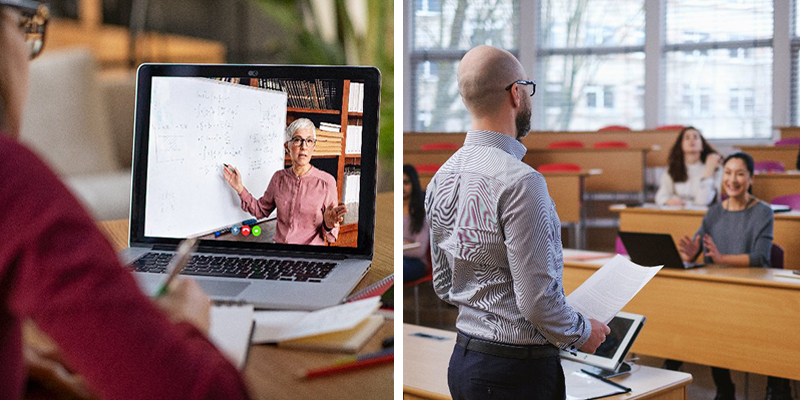
How strong is the effect of blended learning?
From the studies included, Müller and Mildenberger (2021) calculated the effect size (Hedges’ g). This reveals how strongly the learning success differs when blended learning is applied (experimental group) compared to when it occurs in a traditional learning environment (control group). Here, effect sizes starting from 0.2 are usually regarded as a slight effect, those starting from 0.5 are seen as a moderate effect and those starting from 0.8 are considered to be a strong effect (Bortz & Schuster, 2010).
The result is that the effect is barely measurable. The effect size was practically zero (g = 0.06) across all 21 individual studies. The confidence interval [−0.13; 0.25] indicates that the negative effects to be expected as a result of reducing in-person time in favour of online teaching are very slight at best. Or, if we turn that on its head: very few positive effects are obtained per se by simply combining media learning environments with in-person teaching.
Does the context or methodological design play a role?
The authors also took a closer look at different moderators which might influence the results. For example, they researched the data with regard to
- whether there were any differences according to specialist field (STEM as opposed to other specialist fields),
- whether the results were influenced by a randomised assignment of the students to the experimental or control group as opposed to their self-selection one of these groups,
- whether it made a difference if the same lecturer taught both variants or the lecturers changed,
- whether the type of student performance assessment (exams as opposed to integrated tests) influenced the results, and
- whether the results from groups with different percentages of time spent using the media option differed from each other to a significant extent.
The answer to all of these questions was “no” –it was marginal at best and not even remotely significant in any of the cases (see Table 1).
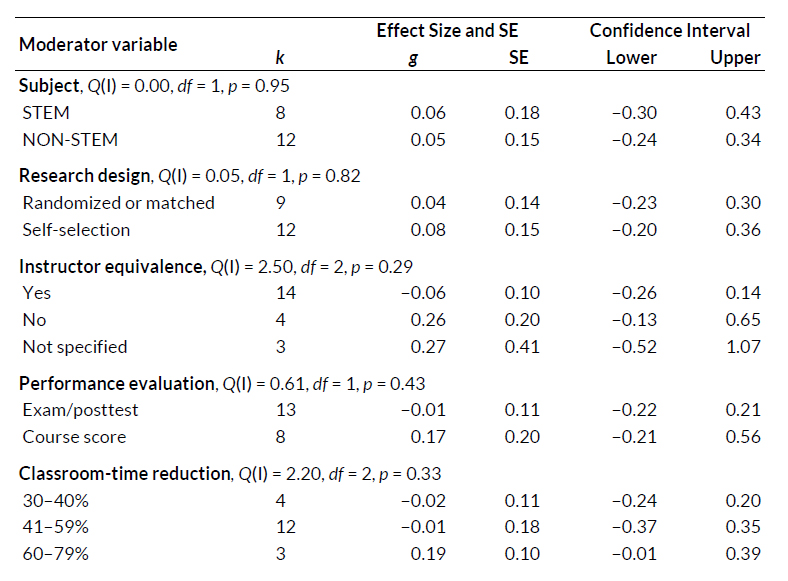
Are flipped classrooms what makes the difference?
In view of the current debate, there is another result that is particularly surprising: different meta-analyses of flipped classrooms show that slight to moderate advantages can be gained by this method compared to in-person teaching. Does this also apply to other blended learning concepts to the same extent? Müller and Mildenberger (2021) also took a look at this question. They tested whether learning success was influenced by the learning design chosen (flipped classroom as opposed to other blended learning concepts). No significant difference was shown here either (see Table 2).

None of the learning designs researched differed from the equivalent in-person course. This was the case regardless of whether blended learning was offered in a flipped classroom format or not.
What follows from these results?
The results argue for lecturers at universities and colleges most certainly being able to risk more temporal and spatial flexibility through blended learning. Substituting in-person phases with media elements in courses does not automatically lead to poorer learning outcomes.
What really signalises a good course is didactic criteria such as clarity of expectations, suitable assignment of tasks, or targeted feedback. What influences learning success is not whether blended learning is applied at universities but how.
The extent to which introducing blended learning can achieve not only more flexibility but also more quality depends on how well teachers manage to implement didactic elements with the use of media. Mörth et al. (2021) provide an overview of core organisational factors in one of their papers. A well-thought-out, coordinated sequence of in-person and online phases is required in order to tap the optimum potential of both learning variants as well as possible (Nortvig et al., 2018).
What has been your experience of blended learning? Which aspects are important to you when you put it into practice? Please feel free to share your experiences using the comment function.
References
Bortz, J., & Schuster, C. (2010). Statistik für Human- und Sozialwissenschaftler. (7., vollst. überarb. und erw. Aufl). Springer.
Mörth, M., Ulrich, I. & Enders, N. (2021, 03. November). Online, blended, hybrid, Präsenz? Evidenzbasierte Erkenntnisse zur Gestaltung (digitaler) Lehre. Vortrag auf dem University:Future Festival, Berlin.
Müller, C. (2022, 27. September). Flexibles Lernen mit Blended Learning: Empirische Befunde und praktische Gestaltungsempfehlungen. Tag der digitalen Lehre 2022, Universität Regensburg.
Müller, C., & Mildenberger, T. (2021). Facilitating flexible learning by replacing classroom time with an online learning environment: A systematic review of blended learning in higher education. Educational Research Review, 34. https://doi.org/10.1016/j.edurev.2021.100394
Nortvig, A. M., Petersen, A. K., and Balle, S. H., (2018). A Literature Review of the Factors Influencing E-Learning and Blended Learning in Relation to Learning Outcome, Student Satisfaction and Engagement. The Electronic Journal of e-Learning, 16(1), pp. 46-55
Suggestion for citation of this blog post: Hawelka, B. (2022, October 27). Blended Learning: Quality despite flexibility? Lehrblick – ZHW Uni Regensburg. https://doi.org/10.5283/ZHW.20221027.EN
Our authors introduce themselves:



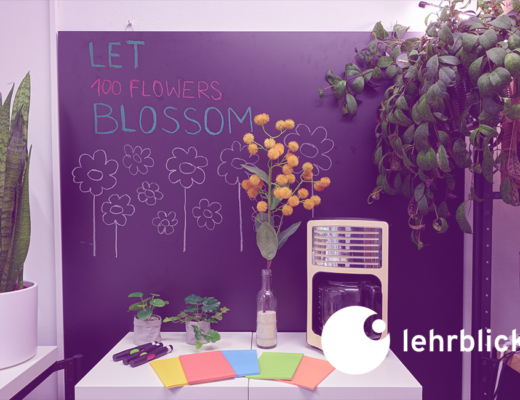

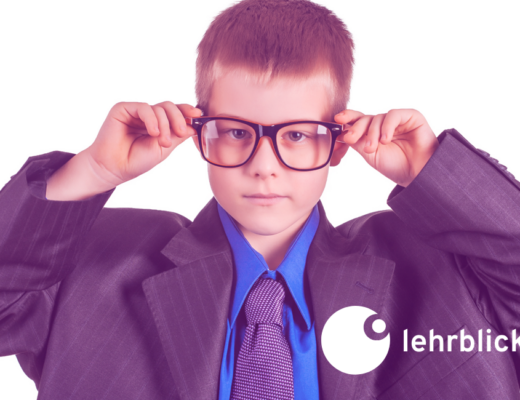

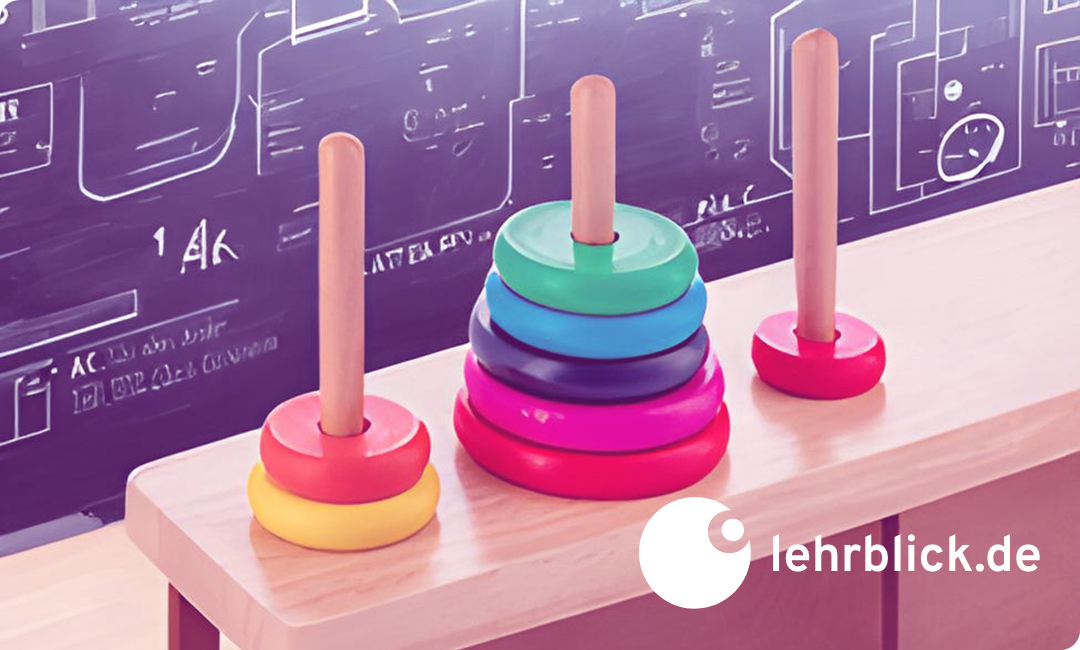














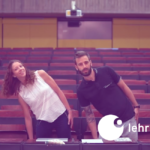


















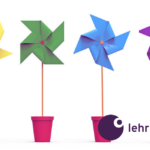






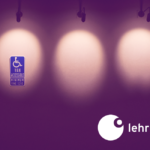








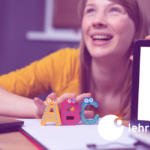









No Comments